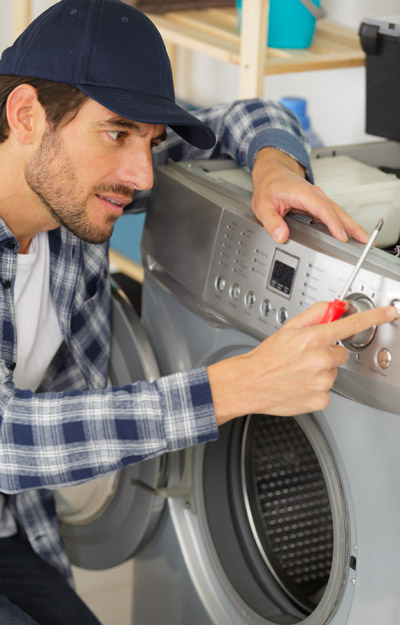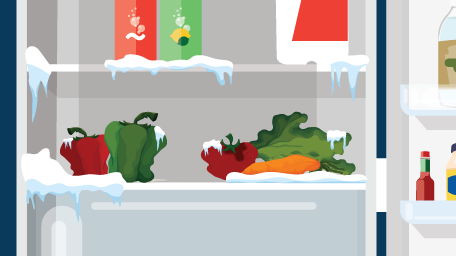Make sure you haven't got the discount earlier.

Why is my Refrigerator Not Cooling?
If your refrigerator isn’t cooling, there are a few components that may be causing this symptom. Follow along to find out what these components are, how to locate them, and how to test them. Once your refrigerator temperatures have normalized, we’ll walk you through how to make temperature adjustments based on your preferences.

Is Your Refrigerator Getting Power?
Your first step in diagnosing your refrigerator is to determine whether you have power to the refrigerator. To check this, open the door and see if the internal lights come on. If so, we know we do have power to the appliance, and now we can move on to the next step. If no lights come on this means they have either burnt out or the receptacle itself may have no power to it. You will want to plug in another appliance into the receptacle to verify whether you have power or not.
Are the Fans and Compressor Running?
The Controls
Your next step will be to determine whether the fan in the refrigerator and the compressor are running. If you don’t hear any fans running, this may indicate that you have a problem with the controls. On a standard refrigerator with a dial-type control or a slide-type control, there is essentially an on/off switch that turns power on to the compressor and the fans. If neither of those is running, the problem is likely with the control. With models that use electronic controls, you’ll either need a good understanding of how those controls work or you’ll need to contact a technician to troubleshoot it further.

The Start Device or Relay Overload Device
If the fans on your refrigerator are running but not the compressor, it is likely a problem with the start device for that compressor. Most compressors use either a relay overload device or a start device. To get the compressor running, those components can usually be tested with a multimeter to check for their proper function. Without the start device working properly, the compressor may not start and therefore you would not get any cooling. Most of these are easily checked with a multimeter. You will just pull the device completely off the compressor to test.

Relay Start Device Components:
Capacitor
It may be called either a run capacitor or a start capacitor. The only thing that can be checked is whether it has shorted or not. Usually, the numbers on the multimeter rapidly change and then go to an overscale condition or an overload condition.
Overload
The purpose of the overload is to protect the compressor from starting and stopping mid-cycle with pressure built up. There should be continuity between the two sets of terminals on that device. One terminal that attaches to the compressor and the external terminal. They should show somewhere close to zero ohms.
Relay
The purpose of the relay portion of the device is to activate both the start and run windings on the compressor. Once the compressor comes up to speed the start winding will get dropped out so that it does not draw too much current. Typically, they will use some type of thermistor or varistor device internally. There will be some continuity between these two terminals. If there isn’t, you can assume that the device is defective. There are different types of relays, and the more modern ones with the electronic control boards internally can be very difficult to check with a multimeter without extensive knowledge of how that circuit works.

Inverter Drive Style Compressors
Lastly, you may find that your refrigerator has an inverter drive style compressor, which would have a box mounted to the side of the compressor. This performs the same function as the start device with the exception that it can also operate a variable speed compressor. Again, these are very difficult devices to troubleshoot without extensive knowledge of the circuits.
The Compressor
The last check would be on the compressor itself. You can test the internal windings on that compressor to verify that they’re in working order. You’ll find three male pins on the side of that compressor. Typically, the one at the top would be the common terminal and the other two would represent both the start and run windings. Measuring between the common terminal and each of the remaining two terminals would indicate that they all have continuity. The start winding will generally have a higher resistance than the run winding. You will also want to look for any continuity between the three pins and ground on the case of the compressor. Make sure that there is no continuity between any of those terminals. If so, the compressor is shorted and would need to be replaced, which would require a certified technician to do that repair.

If both the evaporator and condenser fans are running and the compressor is running, and you are still not getting any cooling in your refrigerator, you can suspect that you have a seal system problem. That will require a qualified technician to perform a proper diagnosis.
How to Set the Temperature in Your Fridge
Once you have the cooling back up and running, you may wonder what the best temperature is to keep your refrigerator, and how to make those adjustments based on your preferences. Continue reading for tips on making those correct temperature adjustments or check out our video below.

Most manufacturers will have a recommended default setting for their models. For fresh-food temperature, that can range anywhere from 35 to 38 degrees Fahrenheit, and a freezer temperature anywhere from 0 to plus 10 degrees Fahrenheit. They are all adjustable to your own preference, however, we do caution that if you set your refrigerator controls too cold, you do run the risk of food freezing in the fresh-food compartment, also causing your refrigerator to run longer and use more energy. If you set your controls to too high of a setting, you also run the risk of food spoiling.
There are several styles of controls to adjust these temperatures, and we’ll give you an example of these and how to adjust them for your model. Most refrigerators that have two or more doors will have two or more controls to operate them. Typically, there will be one for the freezer and one for the fresh-food compartment. On the models we show in our video as an example, one of the controls turns the compressor on and off based on its specific temperature. The other control varies how much air comes from the freezer into the fresh-food compartment.

The controls on most fridges will either be a numbered scale, a name scale (cold, colder, coldest), or you may even find some models that display the ambient temperature in both the fresh food and freezer compartments.
If your model does not have an ambient temperature indicated, but you do want to know what the temperature is, you’ll need to use a quality thermometer. Immerse it in a jar of liquid, in your fresh-food compartment or a semi-solid substance in your freezer, to get an accurate temperature.

If you have decided that the manufacturer’s recommended settings aren’t to your preference, and have decided to make a change, keep in mind that whichever control you adjust, the fresh-food or the freezer temperature, this will affect both compartments. Also, remember that it takes about 24 hours for temperatures to stabilize in your refrigerator after you make an adjustment.
We hope by following our troubleshooting tips, you were able to get your refrigerator cooling again! Don’t forget to properly set your temperature according to your preferences and use our helpful tips to ensure you don’t spoil food or freeze food in the main compartment. For more troubleshooting advice and appliance tips, subscribe to our YouTube channel.





























